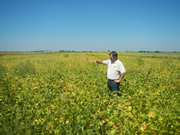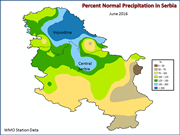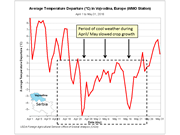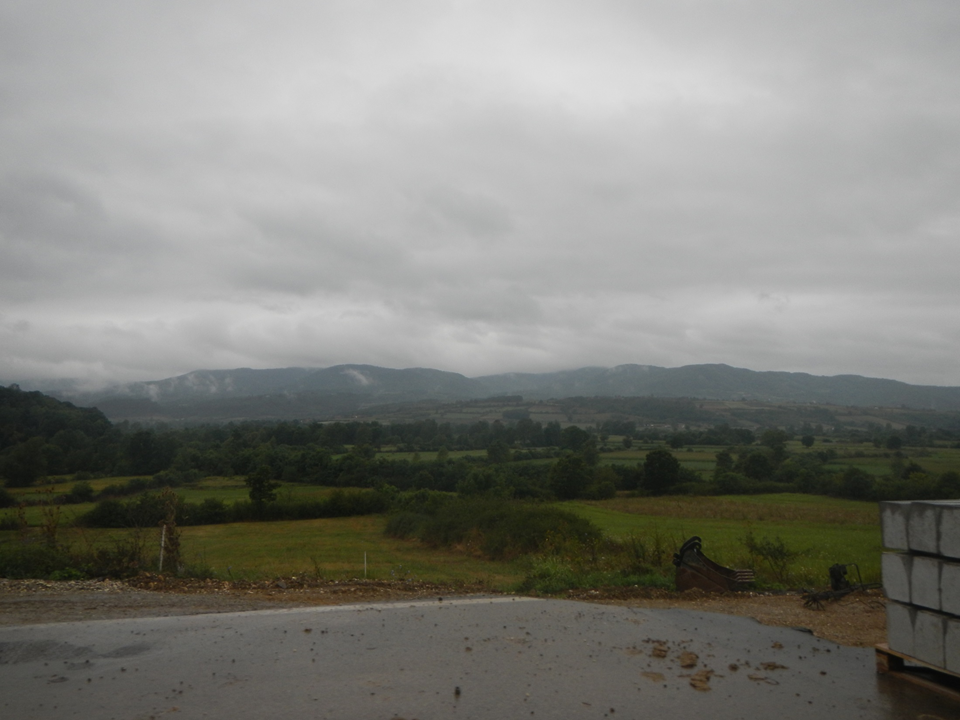Serbia: Record Wheat and Near-Record Corn Production
Predominantly favorable weather during 2016 in non-EU member natio
Serbia enabled record wheat andnear-record corn yields to be achieved.
The 2016 weather was without damaging heat or prolonged dryness but temperatures during April and May were unusually cool and rainfall was excessive in the major crop areas in June. The cool and wet spring
delayed the development of summer crops.
Wheat
The 2016/17 wheat crop was the largest in over twenty years at an estimated at 3.0 million metric tons (mmt) compared to 2.6 mmt last year. Yield is estimated at a record 5.00 t/ha. Serbia also produces soybeans, barley, sugar beet, and sunflower seed but on a much smaller scale. The use of foreign wheat varieties, including French, German and Hungarian, has been increasing in Serbia. These tend to be higher yielding than the local varieties.
Corn
Corn is Serbia’s principal crop. Output for 2016/17 is estimated at 7.0 mmt, the second-highest harvest on record and up 1.0 mmt from last year’s crop. Yield reached 6.36 t/ha (also a second-highest record.) The cool, wet spring prevented an even higher yield, and many farmers reported yields reater than 7 tons per hectare. There were, however, negative impacts from the spring conditions: the heavy June rain left fields excessively wet, which increased pest infestation and hampered fertilizer application. FAS analysts noted substantial damage by the European Corn Borer.
Serbian farmers must compete with higher-subsidized producers in the neighboring European Union and are often reluctant to spend scarce money on inputs with uncertain results. Because of the added expense, pesticide use is often neglected in Serbia, keeping national yields below those in many EU countries. As a hopeful EU candidate, Serbia does not commercially cultivate genetically modified seeds.
Oilseeds
Cool, wet weather in June and July also reduced yield prospects for soybeans and sunflowers. The problem for sunflowers was rain at pollination, a time when bee activity needs to be extensive. Farmers tend to plant sunflowers as frequently as possible. Sunflower seed is a reliable source of revenue and more tolerant than other crops in the frequently dry summers of the region. Sunflowers’ reliability and profitability offer a type of “insurance” to farmers but are also very susceptible to disease when planted for successive years in the same field. In order to balance economic and agronomic concerns, sunflowers are typically planted every three or four years.
 In late August, a team of analysts from USDA’s Foreign Agricultural Service (FAS) toured Serbia to assess crop conditions. The team observed that the soybean crop was not as tall and vigorous as usual, which was likely due to the low temperatures during April and May that delayed germination and development. (View precipitation map and temperature graph.) In late August the crop was in the pod-fill stage. In late August, a team of analysts from USDA’s Foreign Agricultural Service (FAS) toured Serbia to assess crop conditions. The team observed that the soybean crop was not as tall and vigorous as usual, which was likely due to the low temperatures during April and May that delayed germination and development. (View precipitation map and temperature graph.) In late August the crop was in the pod-fill stage.
 
Vojvodina
North of Serbia’s capital, Belgrade is the region of Vojvodina. With its arable plains and fertile soil, Vojvodina, with its agricultural center at Novi Sad, possesses Serbia’s most productive cropland. Novi Sad and its environs are home to agricultural universities and research centers which develop and breed seed varieties for the local market. Vojvodina encompasses half of all arable cropland and almost all of the grain produced for trade in Serbia. Grain is transferred and loaded onto barges at the Danube River Port of Novi Sad and delivered to world markets via the seaport of Constanta, Romania. According to contacts in the region, the 2016/17 wheat yield averaged a record 6 t/ha in Vojvodina.

Central Serbia
In contrast to the commercial breadbasket region of Vojvodina, the land south of Belgrade in central Serbia is hilly and mountainous. Arable land is scattered and concentrated on low hills and valleys. Farms are small and primarily at the subsistence level, containing both crops and livestock. Grain is primarily used to feed livestock and other on-site consumption. Farms are family-run businesses and operated using older technology and well-worn machines. Owners of heavy equipment often service other farms by leasing their services to farmers without equipment. Inputs on crops are fewer and yields are lower than in northern Serbia. Wheat yields in central Serbia are estimated by contacts at 4.5 t/ha. This much larger but less intensively cultivated region of Serbia produces about half of the country’s crops.
Valuable assistance from USDA/FAS Belgrade is gratefully acknowledged.
Current USDA area and production estimates for grains and other agricultural commodities are available on IPAD's Agricultural Production page or at PSD Online.
Visit Crop Explorer http://www.pecad.fas.usda.gov/cropexplorer/
|

